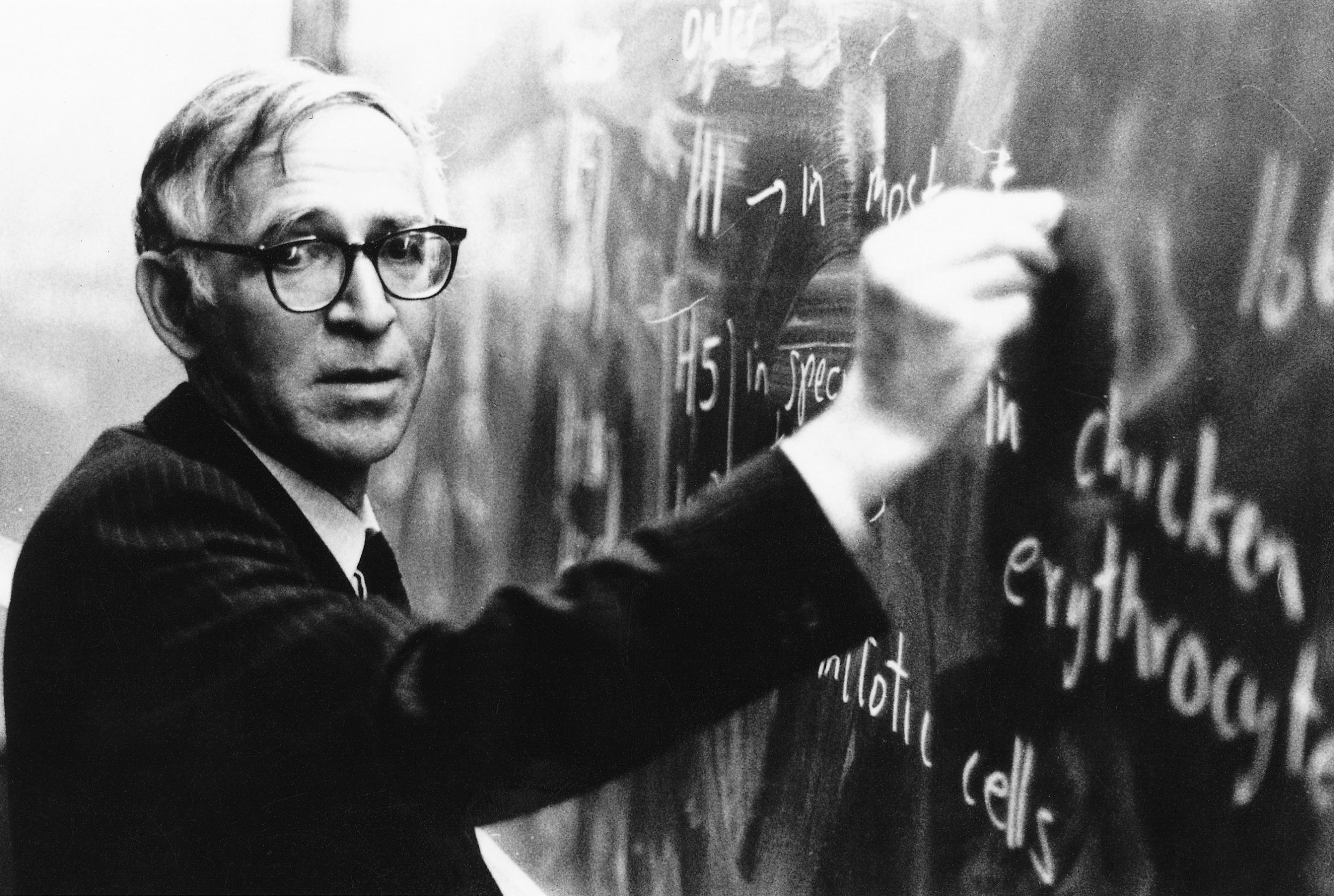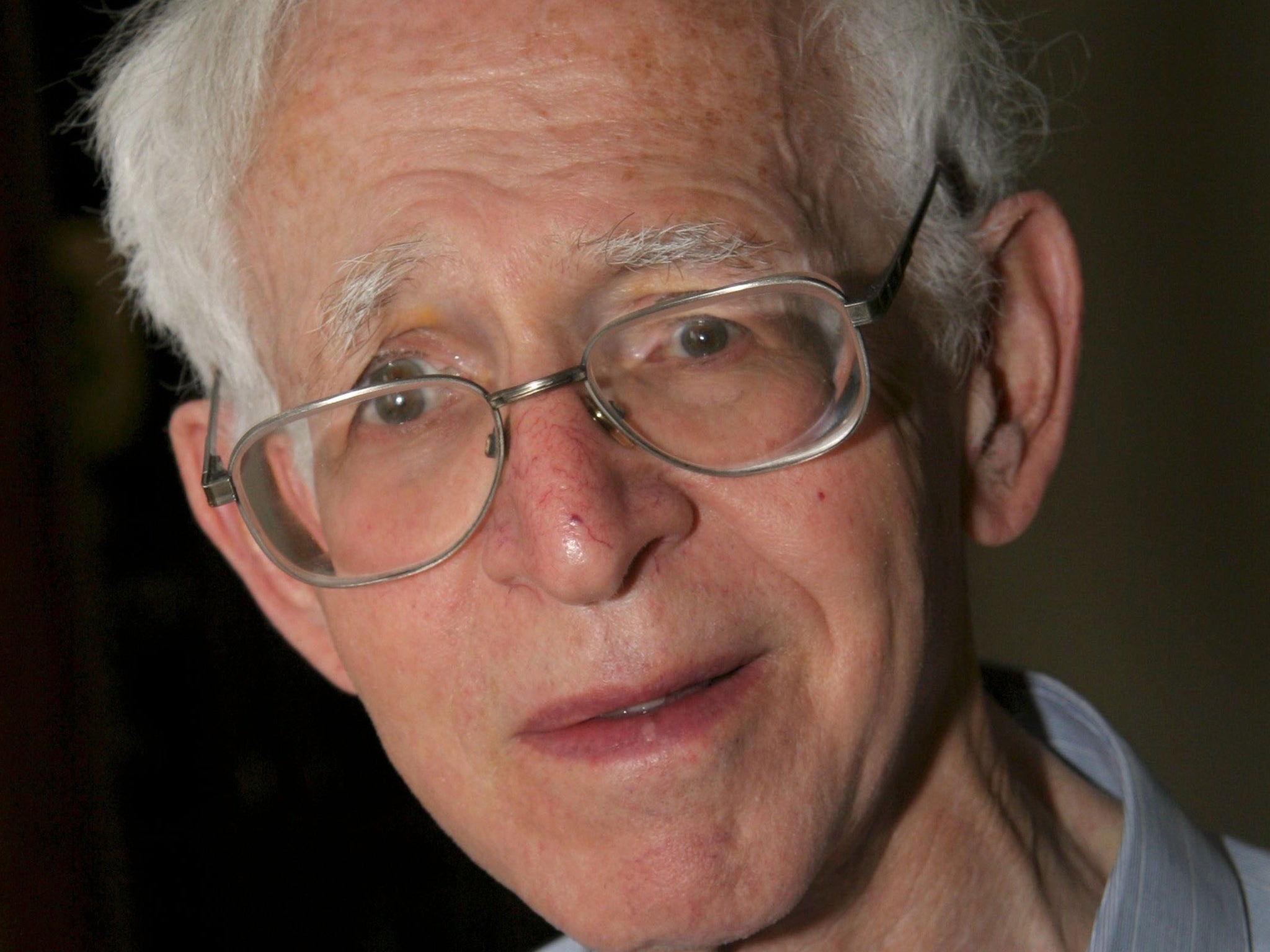Sir Aaron Klug: Nobel-prize winning giant of molecular biology
Educated in South Africa, he became a leading member of the scientific community in Britain who was renowned for his work in crystallographic electron microscopy

Sir Aaron Klug was the British scientist who won a Nobel prize for developing techniques that used electronic probes and crystallographic techniques to discern the architecture and atomic structure of chromosomes and other molecules that are key for life.
Sir Aaron, who was 92, held a PhD in physics but won the Nobel in 1982 in chemistry, for applying techniques from physics and mathematics to problems of molecular structure that could be regarded as within the domain of chemistry.
The Royal Society described him as “a towering giant of 20th century molecular biology who made fundamental contributions to the development of methods to decipher and thus understand complex biological structures”.
He devised and demonstrated techniques of creating pictures of the arrangement of the atoms of crystalline substances in their three-dimensional, previously invisible reality. His work has had profound implications in the study of biology and medicine, including some forms of medical imaging.
Sir Aaron made use of one of the great dualities in science: the existence of electromagnetic radiation and of electrons as both waves and particles, with each regarded as equally real.
In the most fundamental sense, scientists probe crystals by bouncing beams of electrons off their atoms. They infer structure by charting the paths of the rebounds.
In addition, subjecting a crystal to electromagnetic radiation from many angles provides further information. Properly analysed, the patterns made by the reflected radiation can produce a map of a molecule in its full three dimensions.

Sir Aaron’s contribution was made possible, at least in part, by his mastery of many scientific techniques, and his ability to transfer methods from physics to the life sciences. Excursions beyond the boundaries of physics into other fields, biology in particular, were not so common, he once noted.
“Many physicists,” he observed, “hate the idea of anything wet and sloppy.”
Among the major contributions made by Sir Aaron and his colleagues was to break down a substance called chromatin into fragments susceptible to diffracted X-rays and the beams of electron microscopy. It is in chromatin that DNA is packaged within living tissue.
Sir Aaron also worked on another molecule of fundamental importance, transfer RNA, and later in his career worked on proteins called zinc fingers, which are involved in switching genes off and on. His research has contributed to the understanding of Alzheimer’s disease and other forms of neurodegenerative disease.
In 1982, the Nobel committee awarded the chemistry prize to Sir Aaron for “for his development of crystallographic electron microscopy and his structural elucidation of biologically important nucleic acid-protein complexes”.
Nucleic acids are fundamental building blocks of living matter; making known their structures has contributed to deeper insights into the mysteries of life.
Mapping the unseen in this manner can be regarded as the solution of a puzzle, and from childhood, Sir Aaron found himself drawn to puzzles.
Sir Aaron was was born in Zelvas, Lithuania in 1926. He was two years old when his father, an artisan who also became involved in raising cattle, moved the family to Durban, South Africa, hoping to find a home more congenial to Jews.
One of Sir Aaron’s earliest fascinations was with Egyptology. Later, the book Microbe Hunters by Paul de Kruif, whetted an interest in science. In 1945, he graduated from the University of Witwatersrand in Johannesburg. Drawn by physics, he obtained a master’s degree from the University of Cape Town, followed by a PhD in solid state physics at the University of Cambridge in 1952.
He led the Medical Research Council’s Laboratory of Molecular Biology in Cambridge and the Royal Society and played a key role in the scientific community’s response to developments such as mad-cow disease and GM food.
In England, he worked at top-ranked institutions with some of the celebrated scientists of his era, including Rosalind Franklin, whose speciality was crystallography. Her work, which led to the discovery of the structure of DNA, has often been said to have been denied full recognition until after her death. Some have argued that her gender may have played a part in the delay in achieving recognition.
With Franklin, Sir Aaron worked on the structure of tobacco mosaic virus, a springboard to learning more about molecular structure. Through Franklin, he said, he learned something particularly important.
He said he had a tendency to squander energy in service to his wide-ranging curiosity. From Franklin, he learned how important it was at times “to be single-minded”.
Through Franklin, Sir Aaron became a friend of Francis Crick, who shared the Nobel Prize with James Watson and Maurice Wilkins in 1962 for discovering the structure of DNA.
Crick helped Sir Aaron’s research group became part of a molecular biology lab at Cambridge. In 1968, Sir Aaron and his collaborators announced the technique of Fourier electron microscopy, showing how seemingly limited data could permit three-dimensional molecular reconstructions. The discovery revealed the structures of hundreds of molecules and produced nothing less than a revolution in the field of structural molecular biology.
In 1986, Sir Aaron became director of the Cambridge molecular biology laboratory, serving until 1996. He was also president from 1995 to 2000 of the Royal Society, the world’s oldest scientific organisation, whose members have included Isaac Newton, Charles Darwin and Albert Einstein.
In 1948, Sir Aaron married dancer and choreographer Liebe Bobrow; they had two sons, Adam and David, and several grandchildren. Adam died in 2000. Sir Aaron is survived by Liebe and David.
“Almost everything I’ve worked on,” Sir Aaron once said, “after I started, other people moved in and did all sorts of useful work, but by then I’d moved on to something else.”
The reason, he said, was that “people jump in when they see something good and spoil the fun, really”.
Sir Aaron Klug, chemist, born 11 August 1926, died 20 November 2018
© Washington Post
Join our commenting forum
Join thought-provoking conversations, follow other Independent readers and see their replies
Comments
Bookmark popover
Removed from bookmarks